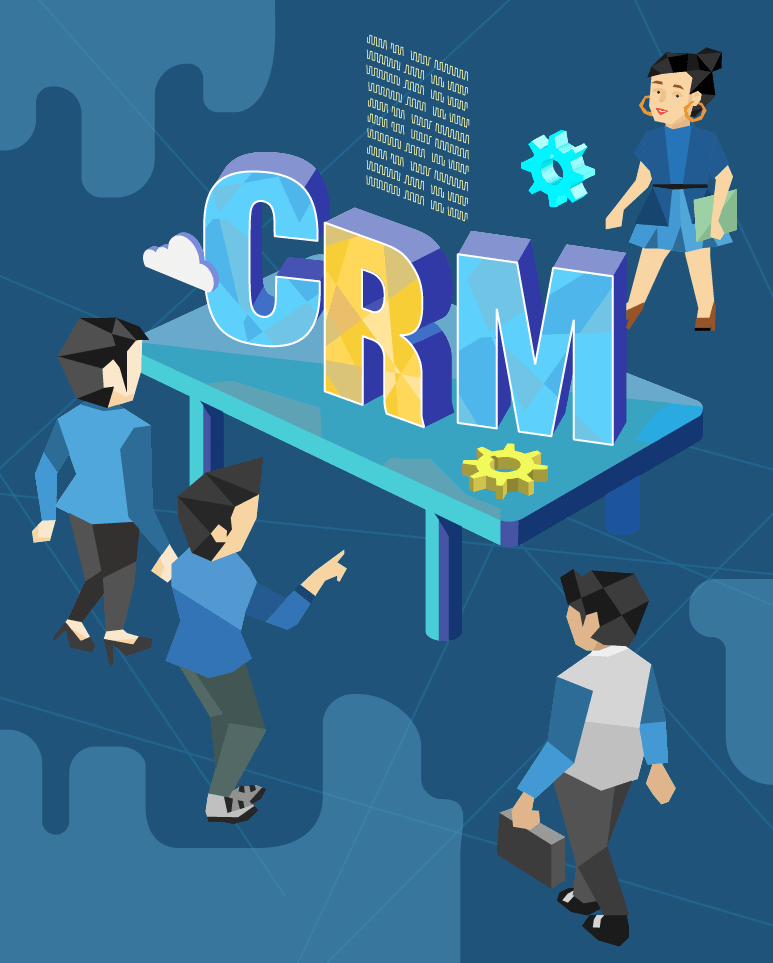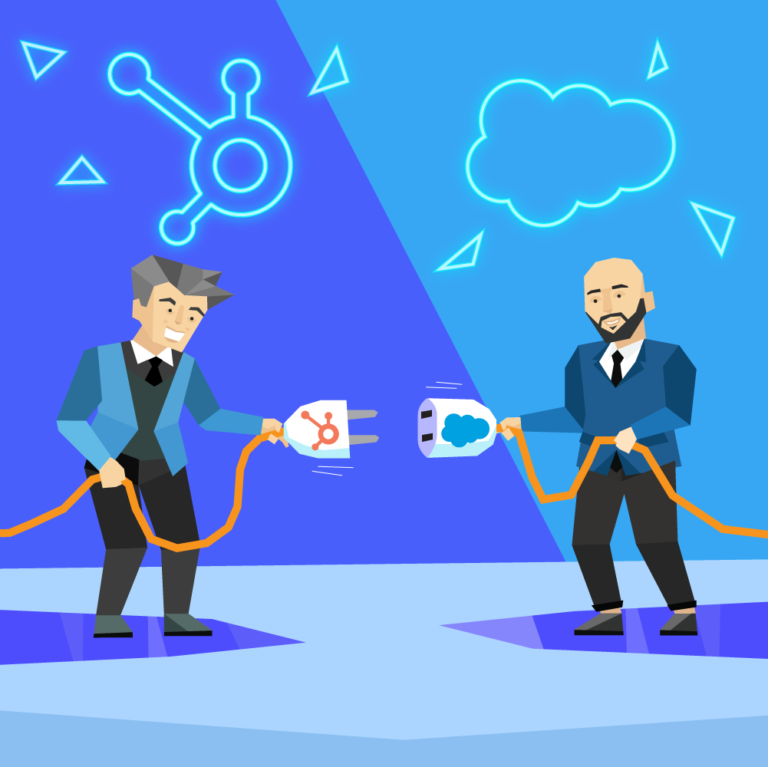Sales Funnel Metrics Are A Key Component to Business Growth

The sales funnel is the series of stages that visitors go through to reach the point at which they become customers. It’s your marketing and sales efforts that help to guide visitors through the sales funnel. Unfortunately, many visitors won’t make it all the way through, choosing to drop out of the sales funnel for one reason or another before they make a purchase. Monitoring your sales funnel metrics can help you identify why.
Through the use of certain sales funnel metrics, you’ll be able to identify where you’re losing prospects throughout the sales funnel so that you can improve your marketing and sales efforts and boost your conversion rate. Metrics can also help you determine your ROI for various marketing and sales strategies. But knowing what sales funnel metrics to follow and how to take action based on those metrics can be a bit tricky. A brief guide follows on what sales funnel metrics you should be tracking and how to leverage the insights you obtain to improve your sales funnel.
Overall Benefits Of Monitoring Your Funnel Metrics
By monitoring the three major types of funnel metrics, you’ll be able to identify the strengths and weaknesses of your marketing and sales strategy that will inform how to improve your sales funnel. The more specific benefits to monitoring your funnel metrics include:
Identify Areas of Focus Instead of Guessing
If conversion rates are low, it’s better to use funnel metrics to pinpoint exactly where the problem lies instead of just making changes to your marketing or sales strategies based on guesswork. Guessing won’t solve anything — it generally only results in the waste of time and effort since it will rarely address the actual problem.
For example, using metrics you can identify that a significant percentage of leads are making it to the last stage of your sales funnel — to the point where they are placing products in their shopping cart only to abandon your site. You can then narrow down the possible issue to the fact that something is stopping them from checking out (for example, maybe there’s a technical issue, such as that the checkout page loading too slowly, or maybe you’re requiring them to fill out too much information in your checkout form).
More Accurate Forecasting
You will be able to use metrics to collect touchpoint-level data throughout the beginning stages of your sales funnel (the marketing stages, if you will) and then compare that data directly to your revenue. You can use these insights to make more accurate forecasts for the future and make adjustments to your marketing strategy accordingly.
Maintain Inter Department Cohesion
The success of your sales efforts depend heavily on the success of your marketing efforts, and your marketing decisions are influenced heavily by your sales success. As a result, maintaining inter-department cohesion is incredibly important. Monitoring sales funnel metrics can help you maintain this cohesion by showing you exactly how your marketing efforts affect the progress of leads through the sales funnel. Based on your conversions and revenue, you can also determine exactly how cost-effective your marketing efforts are. Such accurate data can help you determine your marketing budget as well as identify more cost-effective tactics to employ.
Clear and Visible KPIs
The use of sales funnel metrics allows you to obtain clear and visible KPIs (key performance indicators). KPIs allow you to evaluate how successful specific marketing and sales efforts are within your sales funnel by providing you with actionable insights. KPIs can eliminate a lot of the guesswork that’s sometimes involved in attempting to increase sales.
1. Determine The Total Counts for Each Part of the Funnel
The first thing to measure is volume — or the number of visitors that are entering the sales funnel and that make their way through each stage. Here is the process for measuring the volume of your sales funnel:
Measuring Traffic
Measuring traffic gives you an idea of how effective your marketing efforts are at the initial stages of the sales funnel. How many people are entering the awareness stage of the sales funnel? Web traffic is a pretty broad metric to follow, but it does give you an idea of how you’re doing generating brand awareness when you compare traffic numbers over time.
Measuring Return Traffic
Not every visitor will advance to the next stage of the sales funnel on their first visit to your website. If you don’t do a good job informing them about their problem or need during the awareness stage, they may leave to find another source for their information. Measuring return traffic gives you an idea of how effective your marketing efforts during the awareness stage were. It means that the visitor who left has come back to do further research, whether they’re still in the awareness stage or they’ve moved further down the sales funnel. High traffic numbers but low return traffic numbers often indicate that while you’re doing a good job attracting potential leads to your website, you’re doing a poor job keeping them engaged.
Measuring Leads Generated
Just because someone visits your website doesn’t automatically make them a lead. It’s only by showing a certain amount of interest that prospects become qualified leads. When measuring the number of leads that you’ve generated, there are two types of leads to measure: MQL (marketing qualified leads) and SQL (sales qualified leads). Leads are designated as MQL or SQL using a lead scoring software that assigns points to every prospect based on the information they’ve provided or the actions that they’ve taken.
Marketing Qualified Leads
Measuring the number of MQLs you’ve generated over time helps you identify the effectiveness of the middle of your sales funnel (the interest stage). An MQL is a lead that has been identified as someone who is likely to become a customer. A low number of MQLs means that you’re not doing a good job guiding leads from the awareness stage to the interest stage.
Sales Qualified Leads
As opposed to MQLs, SQLs are leads that have been identified as being more likely to make a purchase soon. In a perfect world, the number of SQLs should mirror the number of MQLs you’ve generated. This indicates that you’ve successfully nurtured your SQLs through the sales funnel down to the decision making stage and they are ready to be engaged by your sales team.
Measuring Sales Opportunities
Don’t mistake your SQLs as sales opportunities. SQLs are still just leads who you think – through their actions and personal information – are ready to be engaged by your sales team. They don’t yet represent sales opportunities. SQLs may still need to be nurtured by your sales team before they become an actual sales opportunity. They only become sales opportunities when your sales team reaches out to them and determines that they present an opportunity. Before you reach out to them, they are still only SQLs. By measuring your sales opportunities, you’ll be able to identify how effectively your team has been able to engage with leads identified as SQLs.
Measuring Closed Won Deals
The ability to close deals indicates how effective your sales strategy is. If you have a high number of SQLs and sales opportunities but a low number of conversions, it means that there’s an issue at the end of your sales funnel. It is ideal when your closed deals are as close in number as possible to your sales opportunities.
2. Analyze Your Sales and Marketing Performance With Conversion Rates
Measuring traffic and lead numbers is helpful for providing a basic overview of how effective your sales funnel is over time, but you’ll be able to get a closer look at the performance of your marketing and sales efforts by studying your conversion rates throughout the sales funnel.
Funnel Stage Conversion Rates
There are several different conversion rates to monitor throughout your sales funnel. For example, you’ll want to measure the conversion rate of visitors into leads, from leads into MQLs, from SQLs into sales opportunities, and from sales opportunities into actual sales. These different conversion rates provide you with insight into how effective each stage of your sales funnel is.
Overall Conversion Rate
The overall conversion rate is the ratio of potential customers that enter your sales funnel (anyone who visits your website and engages in some way before leaving) that turn into customers at the end of the sales funnel. So if 500 people enter your sales funnel and 250 of them make a purchase, then you have an overall conversion rate of 50 percent. The higher your overall conversion rate is, the more effectively your sales funnel is working as a whole.
3. Determine The Value Of Your Sales Funnel & ROI by Source
The revenue you’re pulling in is one of the most important metrics you have to measure how successful your sales funnel is. But identifying your ROI (return on investment) of your sales funnel is equally as important. Identifying your ROI helps you determine the value of your marketing and sales efforts, and provides a better understanding of what types of marketing and sales efforts are worth investing in. However, precisely identifying your ROI requires breaking down your sales funnel into segments to get a more accurate view of what marketing efforts are resulting in a higher ROI.
Segment Funnels by Lead Source When Possible
Instead of considering every lead equal, segment your funnels by lead source. For example, leads generated through organic traffic should be tracked through one sales funnel, while leads generated through Google Ads should be tracked through another, separate sales funnel. Where your lead comes from can have a big impact on how far through the sales funnel they advance. Consider also that some lead sources may cost more than others and may also result in a higher or lower ROI. By determining these numbers, you’ll be able to forecast different marketing tactics much more successfully.
Cost Per Lead
Cost per lead is achieved by dividing the amount of money you put towards attracting new leads by the number of actual leads you’ve acquired. So if you’ve put $1,000 towards an AdWords campaign and you’ve managed to acquire 200 leads, that means that your cost per lead for this particular funnel would be $5 (1,000/200 =5).
Cost Per Opportunity
Cost per opportunity is the metric that provides you with an ROI on both your sales and marketing efforts. A low cost per opportunity means that your marketing efforts are generating the right types of leads at the right cost and that your sales team is effectively guiding SQLs down the opportunity pipeline. The formula for calculating cost per opportunity is somewhat similar to cost per lead (although your opportunities will cost more than your leads). So if you spend $1,000 on an AdWords campaign and it resulted in 50 sales opportunities, it means that your cost per opportunity is $20 (1,000/50=20).
Cost Per Sale
Cost per sale gives you an accurate number for how much it costs to make money. So if you spent $10,000 on an AdWords campaign and captured $20,000 in sales, it means that your cost per sale is $0.50 (20,000/10,000 = 0.5).
Life Time Value of a Customer
The lifetime value of a customer indicates the total amount of revenue you can expect from a single customer. The lifetime value of a customer is an important metric to track, especially in relation to your cost of customer acquisition, as this will allow you to measure how long it will take to recoup the money you invested to earn each new customer (the costs of your marketing and sales efforts). To determine your lifetime value of a customer, follow these steps:
- Determine the average purchase value (total revenue within a time period divided by the number of purchases within that time period).
- Determine the average purchase frequency rate (by dividing the number of purchases by the number of unique customers within that same time period)
- Determine the customer value (by multiplying the average purchase value by the average purchase frequency rate over the same time period).
- Determine the average customer lifespan (by averaging out the number of years a single customer continues to make purchases from you).
- Finally, determine the lifetime value by multiplying the customer value by the average customer lifespan.
Average Value Per Lead And Opportunity
To determine whether your cost per lead and cost per opportunity are worth it, calculate the average value per lead and the average value per opportunity. This can be done by simply dividing the total revenue earned through your sales funnel within a specific time period by the number of leads (or opportunities) earned in that same time period. So let’s say you put $10,000 into an AdWords campaign that earned you $50,000 over a week. During that time, you got 200 leads. Your average value per lead would be $250.
Sales Velocity
Sales velocity is used to determine how quickly deals take to move through your sales funnel and generate revenue. To determine sales velocity, use these four different metrics: average deal value, win rate, length of sales cycle, and number of opportunities. To calculate your sales velocity, multiply the number of opportunities by win rate by the average deal value. Then divide the total by the length of the sales cycle.
By identifying your sales velocity, you’ll be able to more accurately forecast how much revenue you can expect to generate over a specific time period.
4. Calculate The Duration Of Your Sales Funnel
The last important metric to monitor is the duration of your sales funnel, which represents the average length of the sales process, or the average length of time it takes for a prospect to become a buyer. The shorter the duration, the more effective your sales funnel is. Calculating the duration is relatively simple — just subtract the time at which a prospect entered your sales funnel from the time that customer decided to make a purchase.
In addition to tracking the duration of your sales funnel as a whole, it also helps to track the duration of each stage of the sales funnel. This is a good way to identify stages that are effective (those with shorter durations) and stages that have some issues that are preventing prospects from moving to the next stage (those with longer durations).
Customizing The Funnel Metrics
These are some of the metrics that can provide you with a lot of information about how your sales funnel is performing and give you actionable insight into how to identify and address issues that may be hindering prospects throughout your sales funnel. Keep in mind that metrics should be customized to match your business needs and that the numbers don’t mean the same thing for every business. For example, a company that sells low-priced products will view their numbers differently than a company that sells high-priced services. Whatever the case may be, monitoring sales funnel metrics is important to optimizing your sales funnel.
Need help setting up your funnel metrics? Our trusted advisors would be glad to help!









